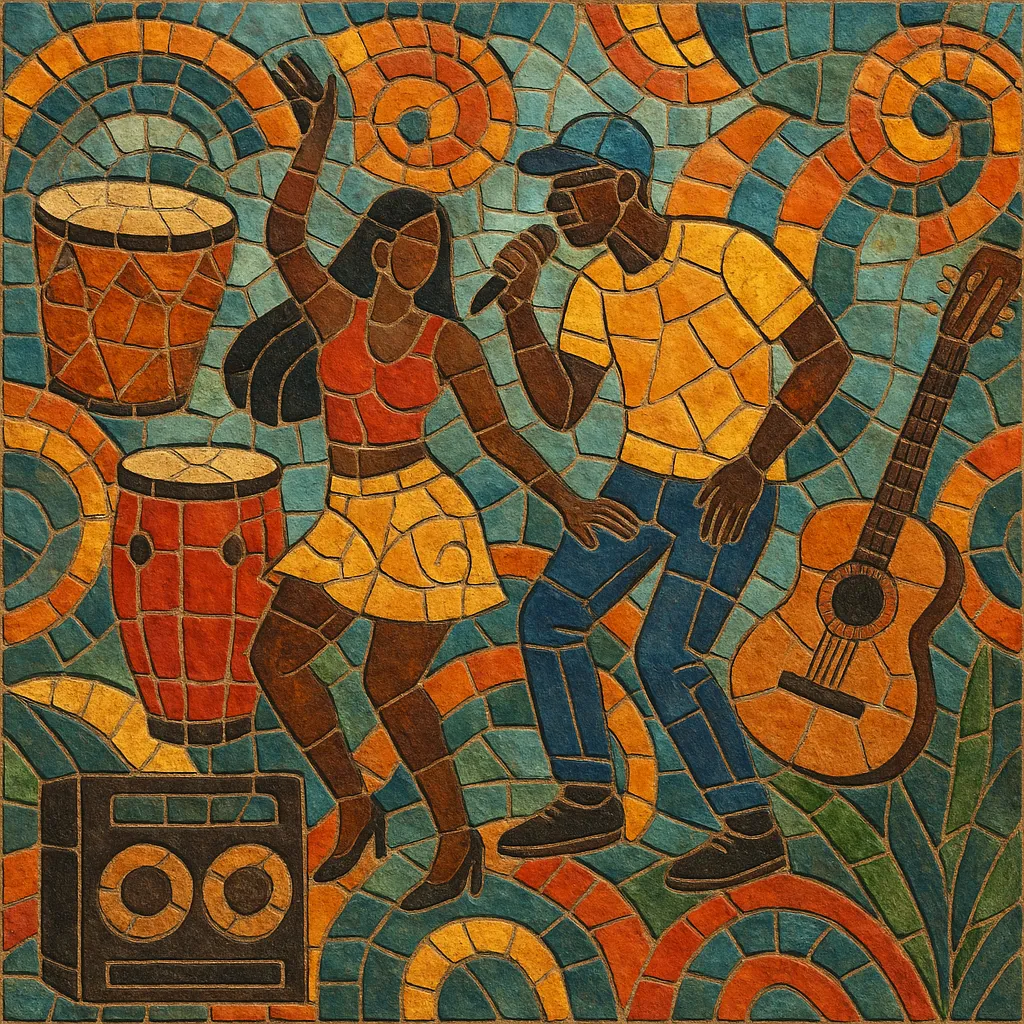Bregadeira is a contemporary Brazilian party style that fuses romantic and melodic brega songwriting with the percussive swing of pagodão baiano and the booming low‑end of funk scenes.
Built for paredão (sound‑system) culture, it emphasizes catchy hooks, call‑and‑response vocals, and drop‑driven arrangements that explode on heavy car and street systems. Producers blend tamborzão- and pagodão‑inspired drum patterns with technobrega/brega‑funk synths and sub‑bass, creating an extroverted, dance‑first sound that can be both flirtatious and rowdy.
Bregadeira emerged in the mid‑2010s in Bahia, Brazil, within the ecosystem of paredão (mobile sound systems) and neighborhood parties. Artists and DJs began to blend the romantic, earworm qualities of brega with the percussion and swing of pagodão baiano, while borrowing drum programming ideas and bass pressure from funk carioca and the northern technobrega/brega‑funk continuum.
Low‑cost DAWs, phone mics, and YouTube/WhatsApp distribution allowed tracks to circulate rapidly across Salvador and other Northeastern cities. Street dancers, paredão crews, and informal DJs acted as tastemakers, pushing a punchy, hook‑centric format that worked on massive speakers and at block parties.
As the style coalesced, arrangements moved toward drop‑driven structures: short intro tags, chant‑like verses, and explosive refrains. Producers pulled in pagodão timbres (timbal/surdo feel), tamborzão‑style syncopations from funk, and bright technobrega/brega‑funk leads, keeping vocals upfront and highly rhythmic. Collaborations between pagodão groups, local MCs, and funk/brega‑funk producers further cemented the hybrid identity.
Bregadeira is now a recognized party format across Northeastern Brazil, frequently crossing over with brega‑funk, automotivo, and contemporary pagodão. Its footprint is most visible in dance‑challenge culture, paredão meetups, and viral street videos, where the genre’s mix of sweetness (brega) and swagger (pagodão/funk) continues to evolve.


